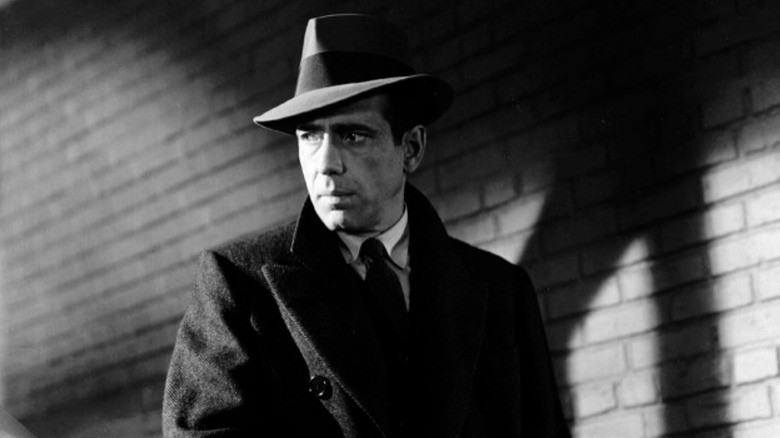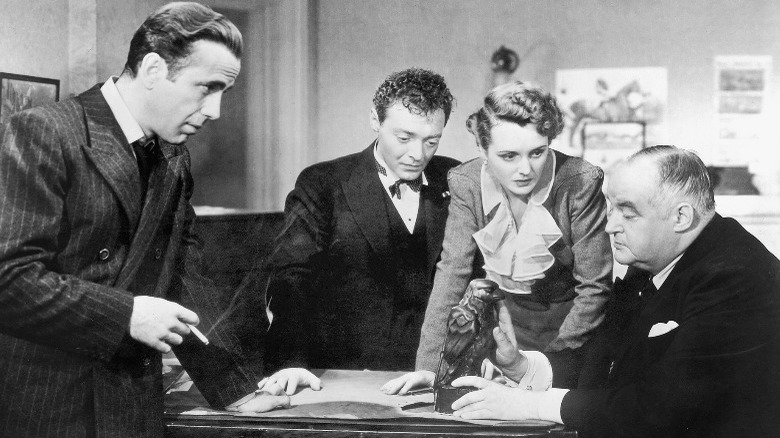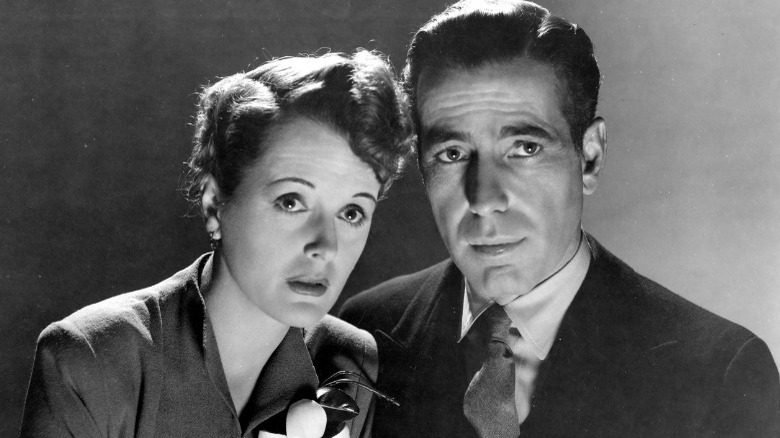How The Maltese Falcon Helped Shape Film Noir
The term "film noir" brings to mind dimly lit offices of chain-smoking private eyes where window shades are barely cracked open to cautiously peer at the menacing, shadowy figures in back-alleys holding guns under their trench coats. The popular image of the film noir, with its hardboiled detective, its seductive and dangerous femme fatale, and its general cast of unsavory criminals, owes its existence to director John Huston's 1941 classic "The Maltese Falcon."
Hardboiled detective fiction from writers like Raymond Chandler and Dashiell Hammett laid the groundwork for the type of stories featured in film noir. The protagonists of these short stories and novels, often published in pulp magazines, were distinct from the fun, quirky gentleman detectives like Sherlock Holmes and Hercule Poirot. These were hardened, cynical men who operated in seedy and corrupt urban environments where no one could be trusted. Hammett himself wrote the novel "The Maltese Falcon," which was adapted to film in 1931 and then again in 1936 under the title "Satan Met a Lady." However, it was the 1941 adaptation, directed by Sam Huston in his debut, that truly evolved hardboiled detective stories into film noir.
The detective and the dame
Crime films featuring detectives on the side of justice existed before film noir, but John Huston's dark interpretation distanced itself from its predecessors with a more cynical bite. "The Maltese Falcon" follows private eye Sam Spade, played by Humphrey Bogart in a role that would make the actor synonymous with the hardboiled detective, as he uncovers a criminal ring associated with the death of his partner and the smuggling of the titular jewel-encrusted bird statue. Spade wasn't a cheery, heroic figure, but an emotionally detached private eye who could be just as deceptive as the criminals he was chasing. Every character is untrustworthy and out for themselves, and even Spade's moral stance is unclear until the end of the film. It's as if the private eye knows he has to deceive people himself in order to attain the justice he searches for.
Huston's film also introduced the wildly influential film noir archetype of the femme fatale. Brigid O'Shaughnessy, played by Mary Astor, is a woman whose duplicity and manipulative tactics make her a far greater danger than the bumbling villainous men she cooperates with. It's O'Shaughnessy, whose real name isn't even known at the beginning of the film, who serves as the true antagonist to Spade. Her cunning and charm allow her to remain one step ahead of the detective, and her ability to uncover the deeper emotions of the otherwise aloof Spade makes her a highly competent nemesis.
Shades of grey in the heat of love
The relationship between these two characters introduced complex gender dynamics that challenged traditional Hollywood expectations of a love interest. "The Maltese Falcon" may have conformed to the then-active Hays code when the "good" Spade won over the "evil" O'Shaughnessy, but the two don't get to walk off happily together after confessing a strange sort of love for each other. Instead, O'Shaughnessy affirms Spade's cynical, distrustful worldview and the detective is left to struggle in loneliness. Jeff Saporito from The Take comments on the importance of "The Maltese Falcon" to film noir's depiction of women:
"The Maltese Falcon" and the character of Spade served as the segues that ushered in the era of true noir. That would be especially true through the film's methods of challenging masculinity and femininity. Much of noir sees the typical gender roles reversed, with women the intelligent and often conniving characters that bend the men to their will. "The Maltese Falcon" certainly utilized this disruptive power balance to great success.
"The Maltese Falcon" includes other influential elements such as heavy use of shadows and claustrophobic spaces, though later films like "Double Indemnity" and "Murder, My Sweet," both released in 1944, were even more visually dramatic. Some aspects associated with the style, like voice-over narration and a melancholy, jazzy score, are absent from the film. Nevertheless, Huston's interpretation of Hammett's novel introduced audiences to the shady, paranoid world of what would come to be known as film noir.


